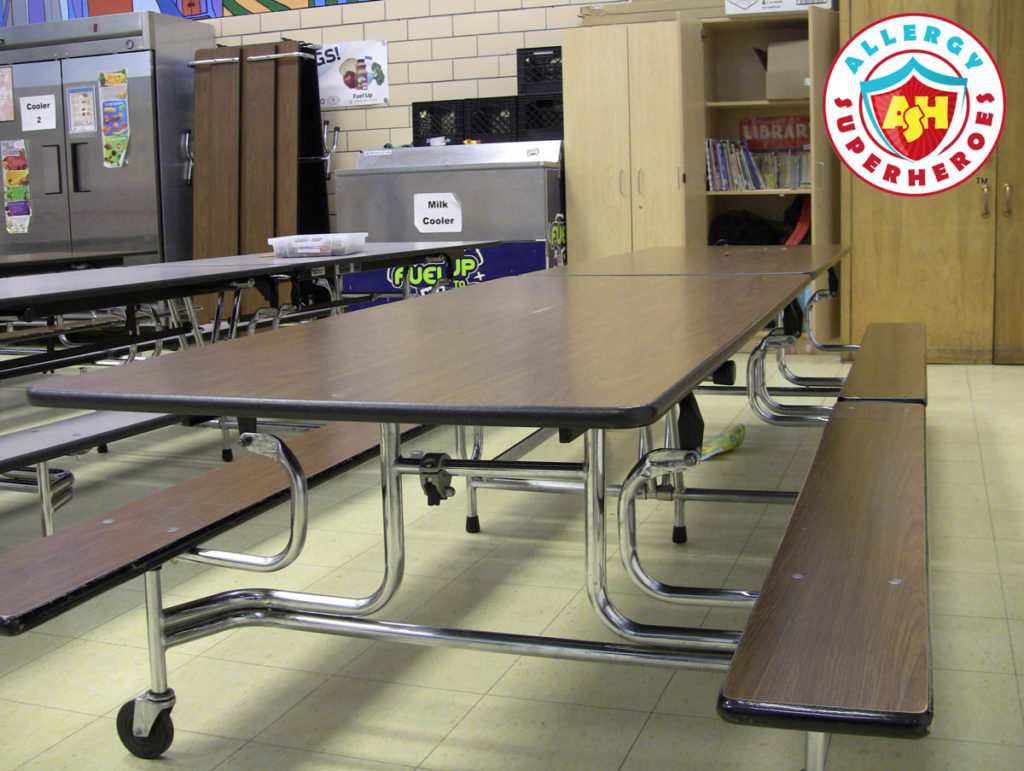
Let’s face it: it can be hard to feed kids who have food allergies. When they’re young and with you all the time, you can carefully prepare all their meals. When someone else cares for them, it’s more complicated. Then once they begin their education, you have to deal with food allergies and school lunches.
Cafeteria workers are under a lot of stress. They have to move a lot of kids through the line in as short of a time as possible–after all, these kids only have 20-30 minutes (sometimes less) to get their food and eat it. That doesn’t leave a lot of room for carefully avoiding allergens and cross contamination.
When my older son Zax, now in 5th grade, started kindergarten, I optimistically thought he’d eat some hot lunches. I fondly remembered going through the lunch calendar with my mom when I was a kid. We’d put a big X through the meals I didn’t like and circle the ones I did. We’d post it on the fridge and then my mom knew what days to pack my lunch.
I figured I could do something similar with my son: first X out whatever wasn’t safe, and then have Zax make his choices. The good news is that we eventually did get to that point. The bad news is that it took more than four years to do it.
Kindergarten
When Zax started kindergarten, I asked the office who I should ask about food allergies and the school lunches, and they gave me a number. I called numerous times and my calls were never returned.
I consulted with the school nurse, and she got through to food services. They told her: “we can’t get that information.” We went back and forth, with the nurse offering to rummage through the kitchen for nutrition labels. It was a pain and pretty much illegal. Although, through it all, I asked my kiddo if he wanted any of the hot lunches. He said no, he just wanted his Sunbutter and jelly sandwich.
Intellectually, I knew that I should still push because it was the right thing to do. It would also help kids beyond my own (particularly kids with allergies who were dependent on free lunches.) But I just couldn’t expend that much energy when my own kiddo didn’t want to eat the food.
A lot of parents didn’t like the company who was providing food that year. In fact, there was a parent movement to hire someone new for food services. They’d been lobbying since before my kiddo started. Before long, we knew that kindergarten would be that company’s final year serving school lunches in our district, so it didn’t seem worth it to push for food allergy awareness in the school lunches.
First Grade
In first grade, I befriended the new head of food services. She told me I was welcome to call her any time to find out what was in the lunches. This was an improvement, but it still wasn’t published/public information, so other food allergy families wouldn’t benefit. Plus, my kiddo still wasn’t interested in hot lunch. So even though I had the information available, we didn’t utilize it.
She and I also discussed what features we’d like in a program that alerts parents about allergens. Her major concern was that the cafeteria sometimes makes substitutions/changes that morning. How could they publish allergen info and still keep parents up to date if it changed?
I suggested having allergy parents subscribe to text alerts or something. The kitchen would have to send a message if a menu item was changed, so parents would remain in-the-know. We had great ideas but never turned any of them into a workable system.
I did call to ask about lunch ingredients once, for an outdoor activity/bbq day. That was the only time my kiddo wanted hot lunch. And then she gave me a frantic call back a while later–turns out there was one side dish that did have his allergens, which she’d forgotten during our first phone call. Fortunately, it was something he wouldn’t eat anyway, but that highlights the problems of not having it in print.
Second Grade
In second grade, the same woman was in charge to start. However, I learned that she wasn’t keeping her promises to the district. They hired her on the basis of nutrition, fresh/local foods, etc, and much of that wasn’t happening. She abruptly disappeared midway through the year.
That left major loopholes on the allergen front, but my kiddos (both by that point, Kal was in Kindergarten) were still always eating food from home. But with all the transition, I didn’t even attempt to get allergen information from people scrambling to fill shoes mid-year.
Third Grade
By third grade, my kiddos started showing interest in hot lunch. A new company was again in charge. They began the school year by emailing the weekly lunch schedule to parents. When clicking through for the first time, I had to accept a major disclaimer just to see the menu. The disclaimer basically said they had no liability for food allergies, and it was so long that it took 11 screenshots on my phone to capture it.
I was majorly peeved because really, they are liable for my kids’ safety at school. I didn’t think their disclaimer was valid. But I’m something of an optimist. I thought “maybe this is just legal-speak, they’re trying to say they can’t guarantee that every ingredient is free of CC, but at least this means they’ll have allergen information.”

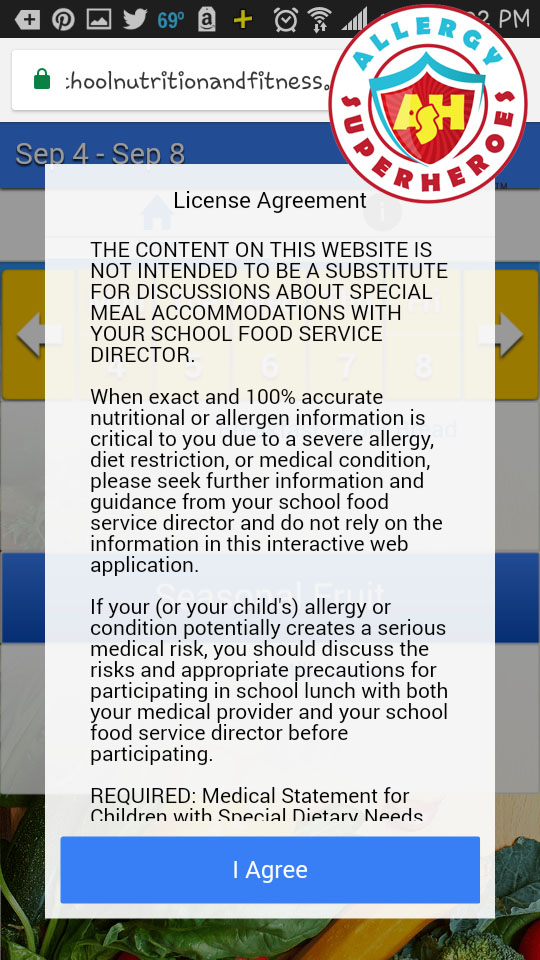
Wrong. There was no allergen information anywhere in sight.
I was so irritated by this disclaimer that I didn’t even bother contacting the company. I figured they wouldn’t be helpful. Mostly, I didn’t feel I would trust their allergen information after they dismissed allergies like that. So I didn’t want to deal with it. Both kiddos were getting bored with their usual lunch rotation by the second half of the school year though, so lunch was more of a struggle.
Fourth Grade with school lunches and food allergies
By contrast, fourth grade was like magic! The first change was that the monthly calendars were available online, with top allergen information published for each menu item. That in itself was a huge step forward.
I spoke to one district employee at Back-to-School night, who was signing people up for free lunches. She was the one who showed me the new web setup. She also told me all about her own shellfish allergy, and the district training on food allergies and cross contamination. (And I introduced her to the Auvi-Q.)
Later, I also learned that the district Director of Nutrition Services has Celiac Disease. She had taken over the position partway through the previous year and was making a lot of changes, particularly regarding customer service, food safety, and compliance with state and federal regulations. (The last includes meal modifications for those with dietary disabilities.)
But that knowledge came later. At the beginning of the year, I still wasn’t convinced that the workers, while moving at a fast speed to feed many kids in a short time, would be very aware of cross contact. However, the only peanut in the kitchen came in the form of prepackaged Uncrustables. That meant the kitchen itself would be free of peanut contamination. We were past worrying much about egg CC due to Zax’s specific situation (see our post about his baked egg study), so it worked for us.
It wasn’t without pitfalls, though. I had to call to clear up a few menu items that seemed suspicious, and we avoided hot lunch on days where things didn’t seem right. Also, midway through the year, the kitchen had a breakdown, and couldn’t function. (Read all about it here.) When the smoke cleared from that, the kids reported that the menu didn’t match the schedule.
That’s when I learned about the most important part of this whole process: the Meal Modification Form. Read our next post here to see how this works!


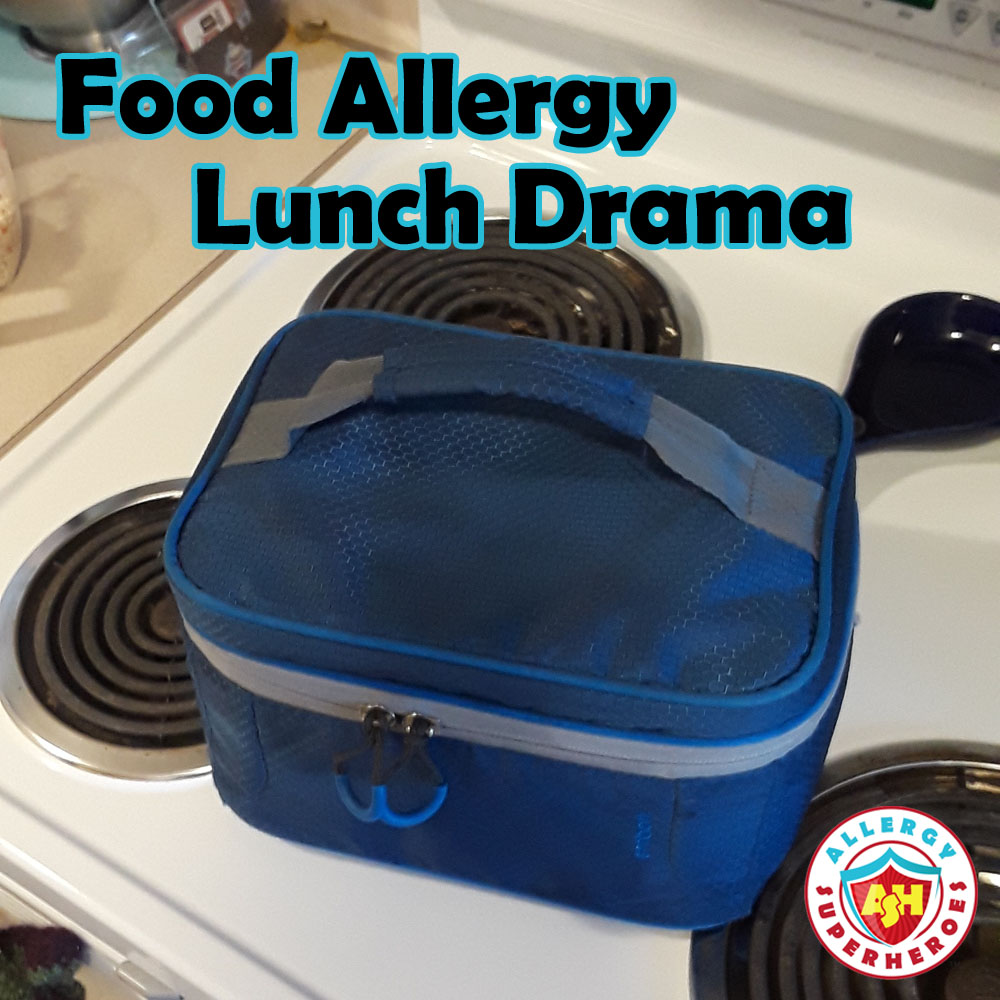
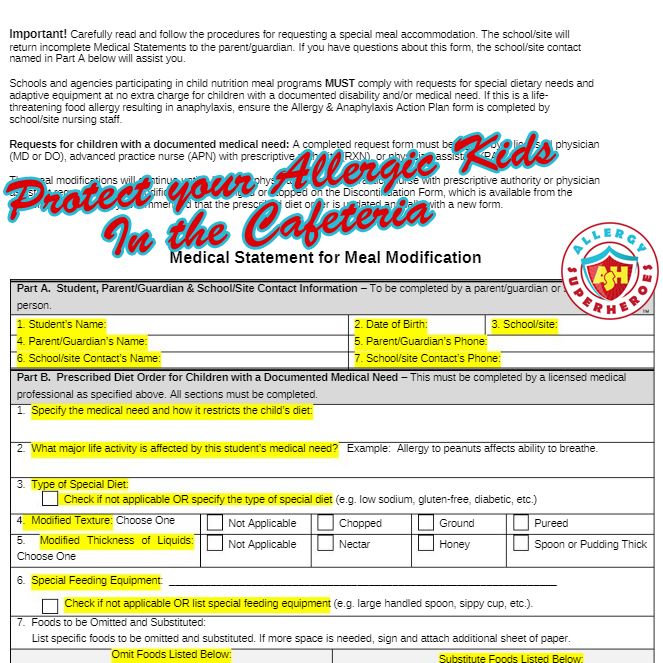

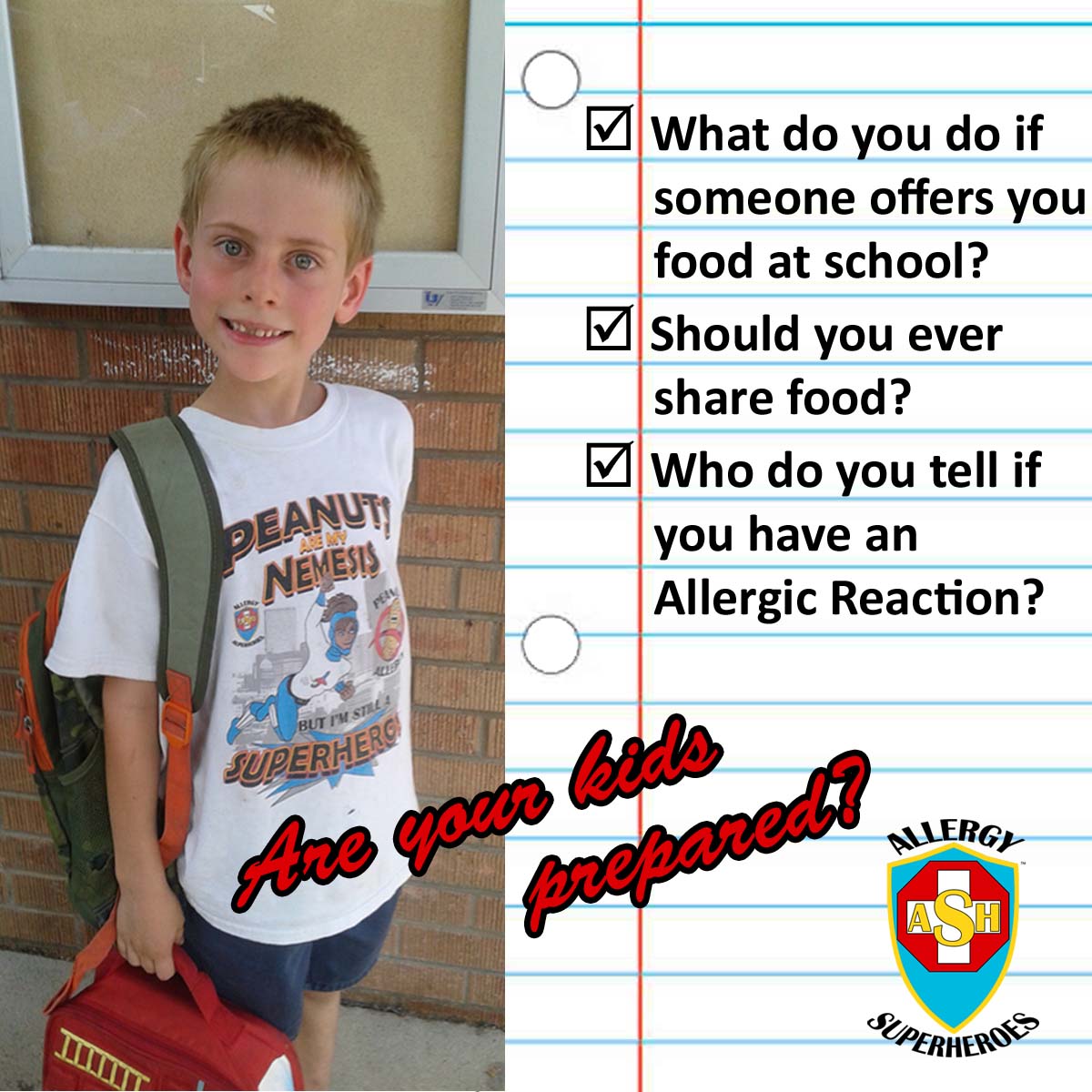
One thought on “Food Allergies and School Lunches”